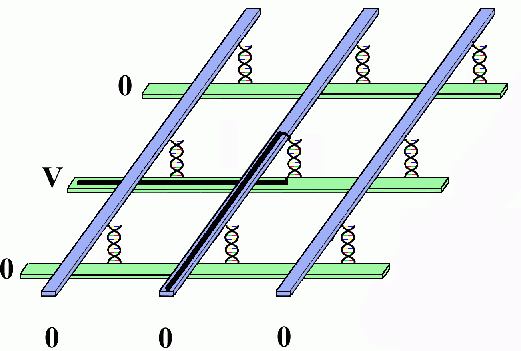Nanobioelectronics
Nanobioelectronics is a new and fast progressing discipline, which integrates achievements of nanoelectronics and molecular biology. Its progress is mainly determined by the development of nanotechnologies. This discipline implies the use of charge transfer processes in biomacromolecules and their assemblies of nanometer size. Integration of nanoelectronic devices with complicated biological structures such as cells bridges nanobioelectronics and biotechnology.
Such biomaterials as DNA, RNA, proteins, biomembranes and others have sizes comparable with those of nanoparticles, nanotubes, and quantum dots. Integration of biomaterials with metal or semiconductor particles, fullerenes, or carbonic nanotubes generates a new class of materials suitable for construction of unique electronic or optic systems. These may be biosensors, complicated DNA-based nanoelectronic circuits, nanobiotransistors, diodes, biochips, nanoengines, nanotransporters, etc.
V.D. Lakhno, DNA nanobioelectronics // International Journal of Quantum Chemistry, 2008, V.108, #11, pp. 1970-1981.

Fig.1. Electron memory (10×10 nm)